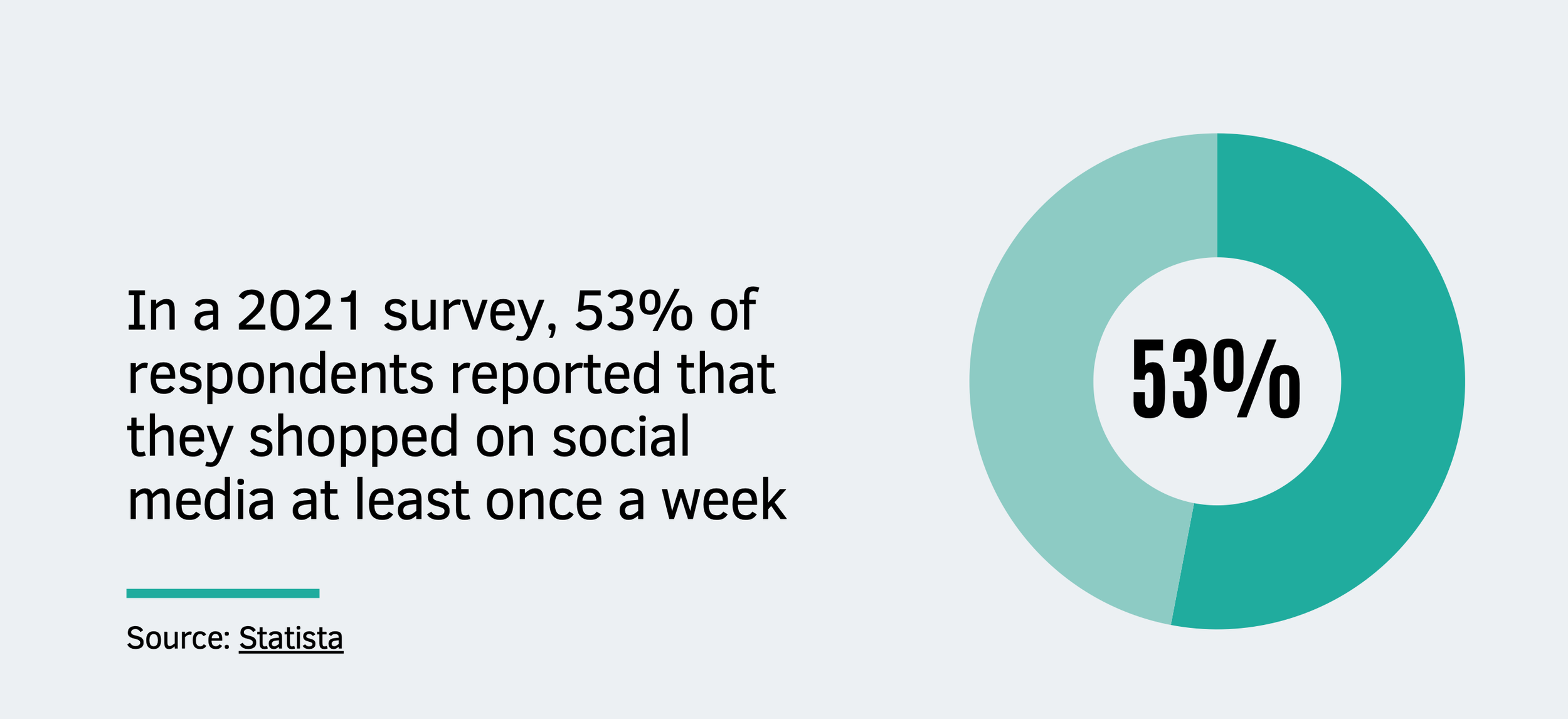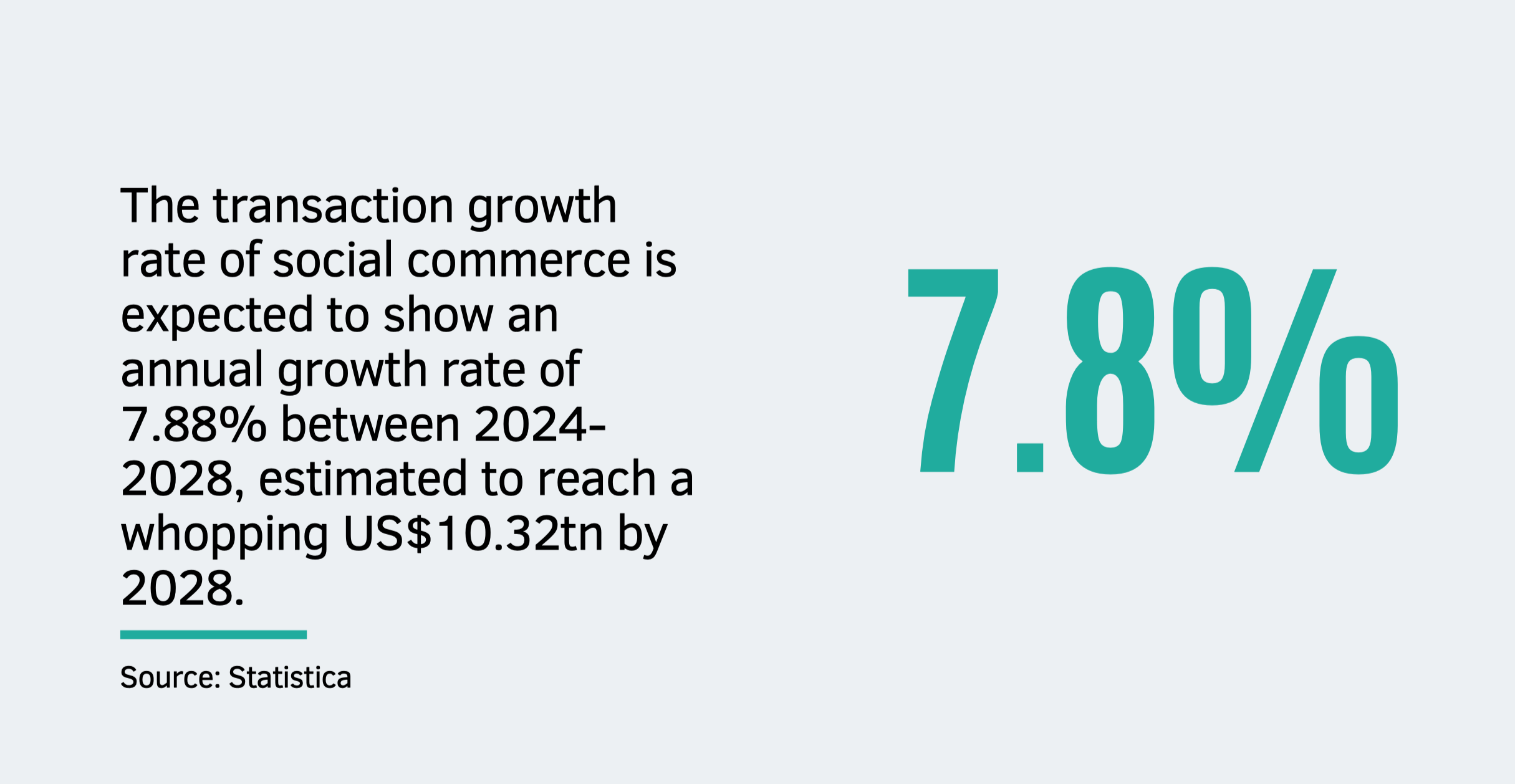What is social commerce and why it matters.
By now, most people are familiar with e-commerce, which refers to transactions taking place online. But what exactly is social commerce, and why should businesses pay attention?
While social commerce shares similarities with e-commerce, it focuses specifically on the buying and selling of goods and services through social media platforms.
These platforms, with their vast user bases and fast growth rate, present a unique opportunity for businesses to reach many potential customers daily. It enables users to discover, browse, and purchase products directly within a social app, streamlining the entire shopping experience.
According to Statista- social commerce generated an estimated revenue of 571 billion U.S. dollars globally in 2023. With an expected compound annual growth rate (CAGR) of 13.7 percent from 2023 to 2028, revenues in this segment are forecasted to surpass one trillion dollars in the latter year.
If you're not yet leveraging social commerce or looking to optimise your approach, this article will provide valuable insights into why it's essential and how it can help grow your business. Keep reading to learn more about what social commerce is, it’s significance, and best practices to follow.
What is Social Commerce?
At its core, social commerce refers to selling products and services directly through social media platforms, making it a subset of e-commerce.
Unlike traditional e-commerce, where transactions might occur on a dedicated website, social commerce happens entirely within social networks.
Statista presented some interesting social commerce demographic stats. Emerging markets like Latin America and Africa had the highest percentage of social network users using Facebook Marketplace or Instagram Shopping Bag globally.
Some of the top platforms for social commerce include:
Facebook
Instagram
TikTok
Pinterest
Most social platforms nowadays offer built-in shopping features that allow businesses to create online stores in a flash all within the app.
With social commerce, retailers can sell anywhere, anytime to anyone.
Social Commerce vs. E-commerce
While both involve online transactions, the key difference is the platform. E-commerce typically occurs on websites or apps, whereas social commerce takes place exclusively on social media networks.
In social commerce, customers can browse, interact with the brand, and make purchases all within the same platform.
Why Social Commerce Matters
Around 4.48 billion people use social media globally. This massive audience presents a golden opportunity for businesses to boost their visibility and sales. Some key advantages of adopting social commerce include:
Enhanced customer experience: Customers can shop directly on the social media platform, making it convenient and efficient.
Expanded audience reach: With social commerce, businesses can reach social media users around the world and attract new customers.
Data insights: Platforms provide valuable analytics that can help businesses better target their audience and optimise their marketing strategies.
Revenue potential: With billions of dollars projected to flow through social commerce by 2025, businesses can tap into a growing market and remain competitive.
Community building: Social media encourages interaction, helping businesses create more engaged and loyal customer bases.
Social Commerce Best Practices
If you're ready to dive into social commerce, here are some tips to help you succeed. We also found this insightful article from Semrush that does a deep dive into this topic.
Choose the right platform: Focus on platforms that align with your business goals and audience.
Engage with your audience: Interaction through comments, direct messages, and social features can build stronger relationships.
Utilise chatbots: Automate customer service for quick responses to common inquiries.
Be creative: Experiment with social commerce features to stand out from competitors and enhance the shopping experience.
The Future of Social Commerce
Looking ahead, the digital commerce market is expected to continue its rapid growth in the coming years, with increasing numbers of consumers shopping online and the development of new technologies and platforms.
Some key factors that are expected to drive growth in the market include the increasing use of mobile devices for online shopping, the integration of social media with e-commerce, and the expansion of e-commerce into new markets and regions.
By implementing an effective social commerce strategy, your business can take advantage of the growing opportunities in social media-driven shopping.
PricePoint IT is here to help support your social and e-commerce goals with innovative retail tech. Get in touch today to see how it works.




